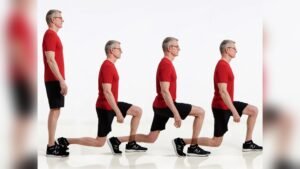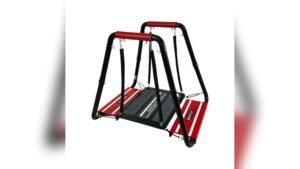Speed and agility are the cornerstones of athletic performance, dating back to ancient times when Greek athletes trained rigorously for the Olympics. These attributes are not just for elite athletes; they are essential for anyone looking to improve their physical fitness and overall health. Speed refers to how quickly you can move, while agility is the ability to change direction rapidly without losing balance. Together, they form the foundation for many sports and physical activities.
Table of Contents
ToggleImportance of Speed and Agility in Sports
Speed and agility are critical in sports such as football, basketball, and soccer. For instance, in football, a player’s ability to quickly change direction can mean the difference between a touchdown and a tackle. Historical records show that even in ancient Roman gladiatorial games, agility was a key factor in survival. Modern sports science has further emphasized the importance of these skills, showing that athletes who excel in speed and agility often outperform their peers.
Overview of Ladder Drills
Ladder drills are a popular method for enhancing speed and agility. These drills involve a series of footwork patterns performed on a flat ladder laid on the ground. The concept is simple but effective: the repetitive motion helps to improve coordination, balance, and quickness. The origins of ladder drills can be traced back to military training, where soldiers used them to improve their footwork and overall agility.
Benefits of Speed Agility Ladder Drills
Ladder drills offer numerous benefits, making them a staple in many training programs. They improve cardiovascular health, enhance coordination, and increase muscle strength. Additionally, these drills are versatile and can be adapted to suit various fitness levels and goals. For example, beginners can start with basic drills, while advanced athletes can incorporate more complex patterns to challenge themselves.
Key Techniques for Effective Ladder Drills
FAQs:
1. What equipment do I need for ladder drills?
To get started with ladder drills, you’ll need a few basic pieces of equipment. The most important item is the agility ladder itself, which can be purchased online or at sporting goods stores. These ladders are typically made of durable nylon or plastic and come in various lengths. In addition to the ladder, you’ll need a flat, open space to perform the drills. This could be a gym floor, a grassy field, or even your backyard.
Wearing the right footwear is also crucial. Opt for lightweight, supportive athletic shoes that provide good traction. This will help you move quickly and safely through the drills. Some athletes also use cones to mark off additional areas for more complex drills. While not necessary, a stopwatch or timer can be useful for tracking your progress and ensuring you’re performing the drills for the recommended duration.
2. How often should I perform ladder drills?
The frequency of your ladder drills will depend on your fitness level and training goals. For beginners, it’s generally recommended to start with two to three sessions per week. This allows your body to adapt to the new movements without becoming overly fatigued. As you become more comfortable with the drills, you can gradually increase the frequency to four or five times per week.
It’s important to listen to your body and avoid overtraining. Incorporate rest days into your routine to allow your muscles to recover. Historical training programs often emphasized the importance of rest and recovery, noting that athletes who overtrained were more prone to injuries and burnout. Aim for a balanced approach that includes a mix of ladder drills, strength training, and cardiovascular exercises.
3. Can ladder drills help with injury prevention?
Yes, ladder drills can be an effective tool for injury prevention. These drills improve your coordination, balance, and proprioception (awareness of your body’s position in space), all of which are crucial for avoiding injuries. For example, better balance can help you avoid ankle sprains, while improved coordination can reduce the risk of falls.
Historical records from early athletic training programs highlight the importance of agility training for injury prevention. Coaches and trainers have long recognized that athletes who are quick on their feet and able to change direction rapidly are less likely to suffer from injuries. Incorporating ladder drills into your routine can help to strengthen the muscles and joints, making them more resilient to the stresses of physical activity.
4. Are ladder drills suitable for all fitness levels?
Ladder drills are highly versatile and can be adapted to suit various fitness levels. Beginners can start with simple drills that focus on basic footwork patterns, while more advanced athletes can incorporate complex movements that challenge their speed and coordination. The key is to start at a level that is appropriate for your current fitness level and gradually increase the difficulty as you become more comfortable.
Historical training programs often included a variety of drills to accommodate athletes of different skill levels. For example, ancient Greek athletes used a mix of running, jumping, and wrestling exercises to prepare for the Olympics. This approach ensured that all athletes, regardless of their starting point, could improve their skills and performance.
5. How can I increase the difficulty of ladder drills?
There are several ways to increase the difficulty of ladder drills. One method is to incorporate more complex footwork patterns. For example, instead of simply running through the ladder, try performing lateral movements or adding in jumps. Another way to increase the difficulty is to perform the drills at a faster pace. This challenges your speed and coordination, making the drills more effective.
You can also add resistance to your drills. Wearing a weighted vest or using resistance bands can make the movements more challenging and help to build strength. Historical training programs often used similar methods to increase the difficulty of exercises. For example, ancient Roman soldiers trained with weighted equipment to improve their strength and endurance.
Conclusion:
Speed and agility ladder drills are an essential component of any athlete’s training regimen. By incorporating these drills into your routine, you can enhance your performance, improve coordination, and reduce the risk of injury. Remember to focus on proper form, gradually increase the difficulty, and track your progress to achieve the best results.
Posts References:
25 Agility Ladder Drill for Elite Performance – YouTube
7 Minute Speed Ladder Workout For Boxing Footwork Training






